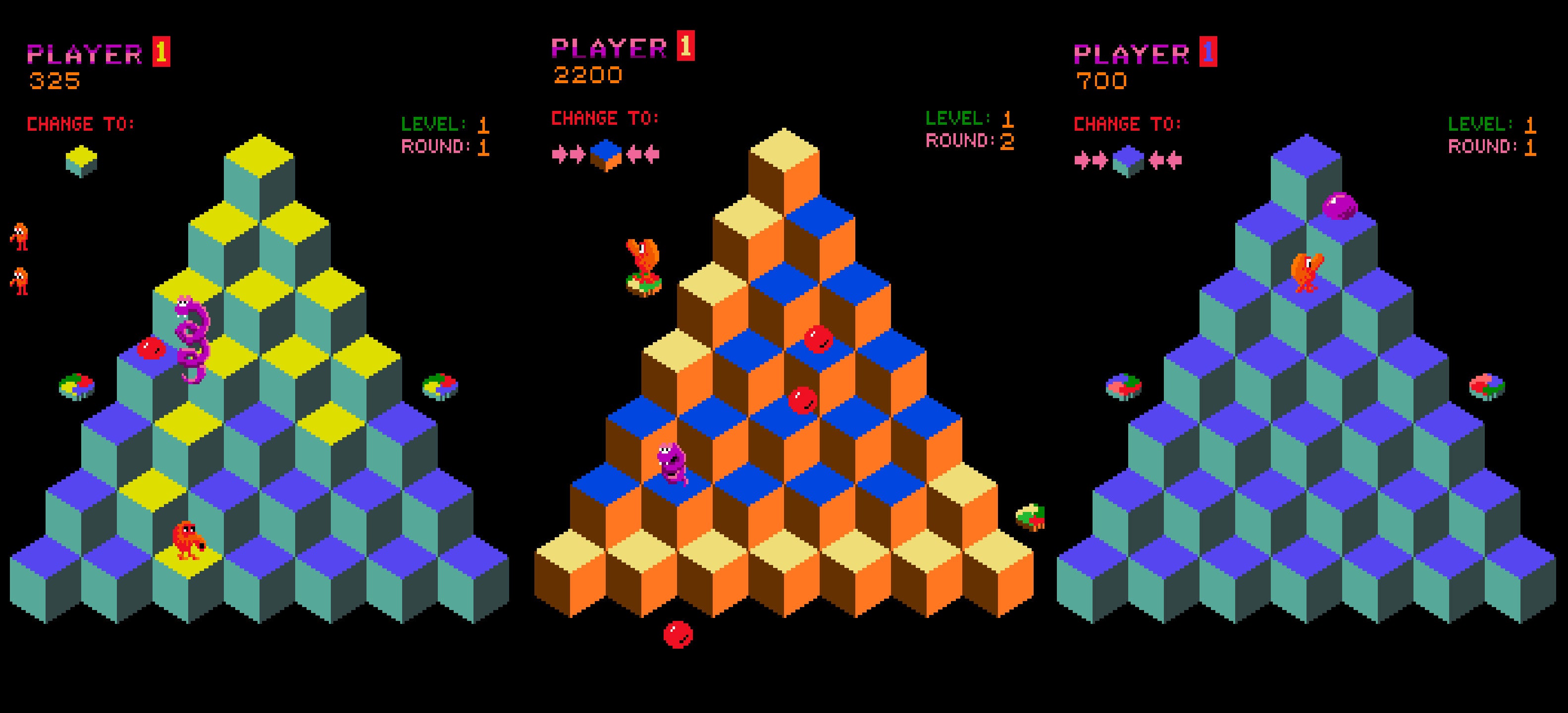Introduction
Q*bert, released in 1982 by Gottlieb, is one of the most distinctive and beloved arcade games in history. Known for its unique gameplay, colorful design, and quirky characters, Q*bert became an instant classic and remains a staple of retro gaming. With its challenging puzzle mechanics and fast-paced action, Q*bert carved out a niche as one of the most engaging and entertaining arcade games of the 1980s.
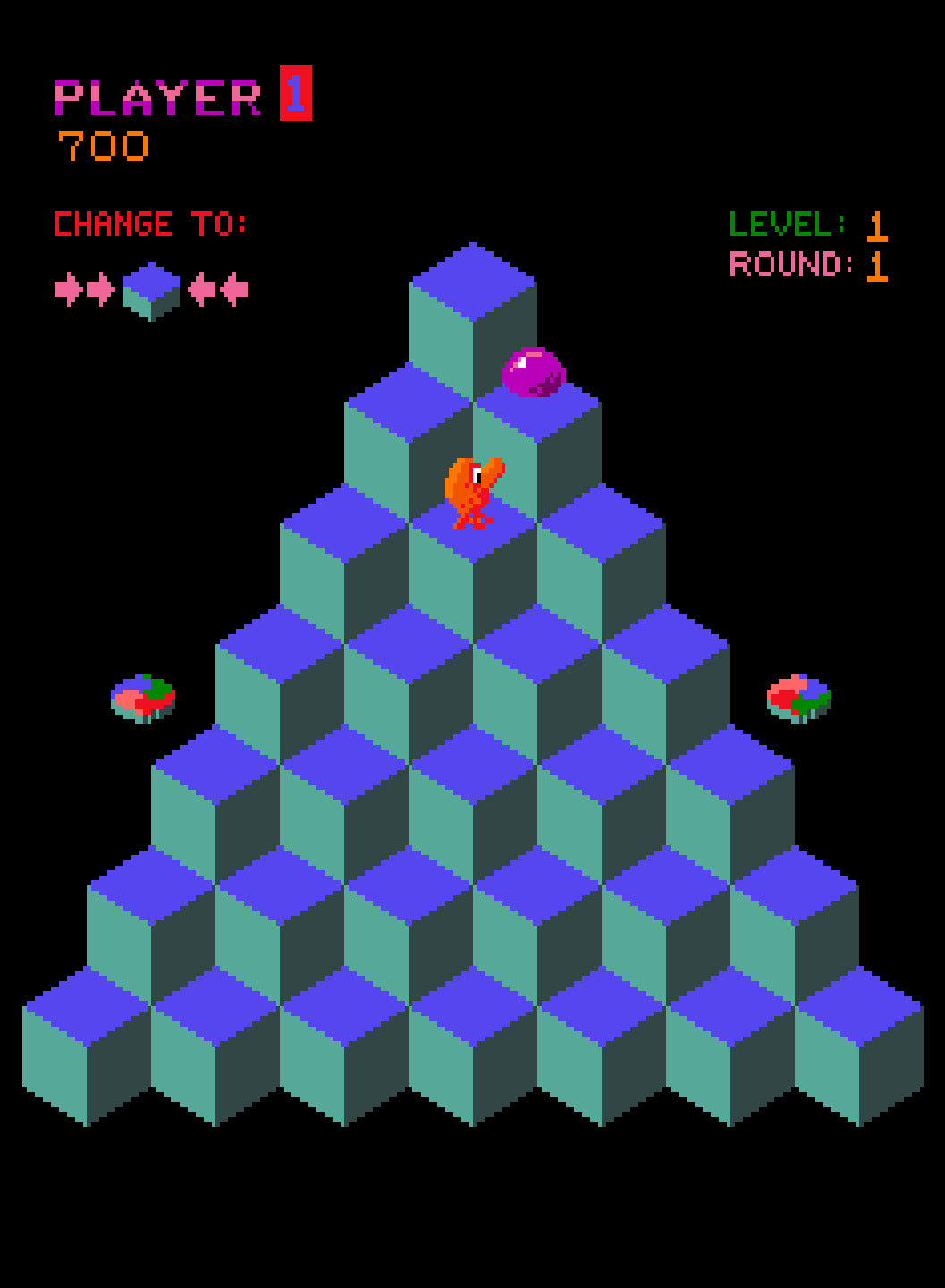
History and Development
Q*bert was developed by Gottlieb, a company well-known for its pinball machines and arcade games. The game was designed by Warren Davis, who wanted to create a unique puzzle game that would stand out in an arcade dominated by action-oriented games. Q*bert was revolutionary in its use of isometric graphics, where the gameplay takes place on a 3D-like pyramid grid, making it visually different from many other games of the time.
Released in 1982, Q*bert quickly became a hit due to its unique mechanics, colorful graphics, and fun yet challenging gameplay. The game was a huge success in arcades, and its popularity led to ports on home consoles and even inspired spin-offs, merchandise, and a television show.
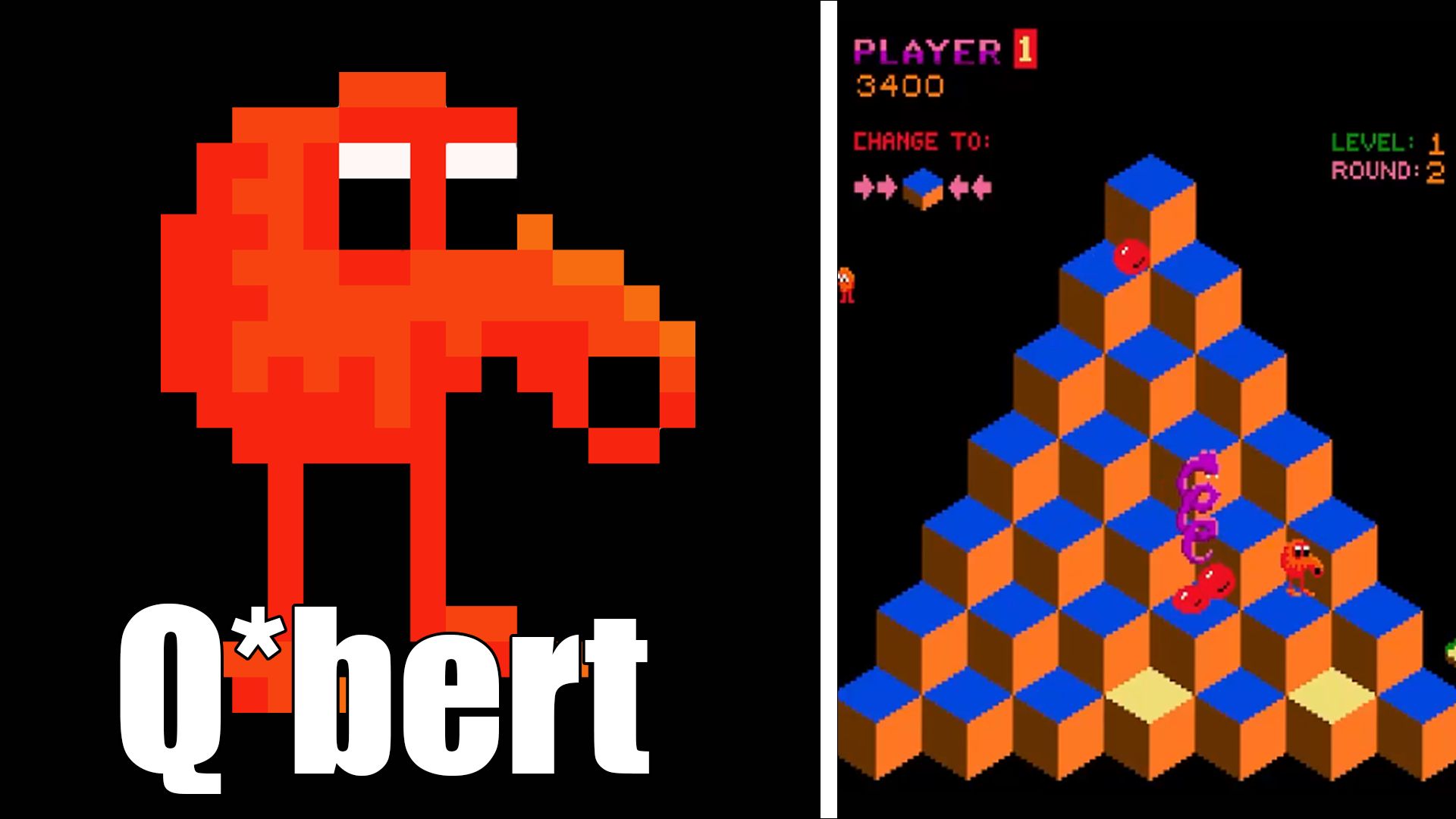
History of Q*Bert Video
Gameplay and Objectives
In Q*bert, players control the titular character, a small orange, furry creature, as he hops around a pyramid-shaped grid. The main objective is to change the color of all the tiles on the pyramid while avoiding various enemies and obstacles.
Key Gameplay Features:
- The Pyramid Grid: The game is set on a 3D-like pyramid of cubes, which Q*Bert must navigate by jumping from one cube to another. Each time he hops on a cube, it changes color.
- Enemies: The pyramid is filled with various enemies, including Coily (the snake-like character), Ugg and Wrong Way (evil characters that run around the board), and Fever (a bouncing creature that adds an extra layer of difficulty).
- Jumping Mechanic: Q*Bert can only jump diagonally to adjacent tiles, which means players must plan their moves carefully and think strategically.
- Objects and Obstacles: Throughout the game, players must avoid obstacles and enemies while trying to change the colors of all the tiles on the pyramid. They can use special items, such as discs and floating platforms, to temporarily stop enemies or gain extra points.
- Level Progression: As players complete each level, the pyramid grid becomes more complex, and the enemies become faster and more aggressive, making each level more difficult than the last.
Tip for Players: Always pay attention to the movement patterns of enemies and plan your jumps ahead of time to avoid getting trapped.
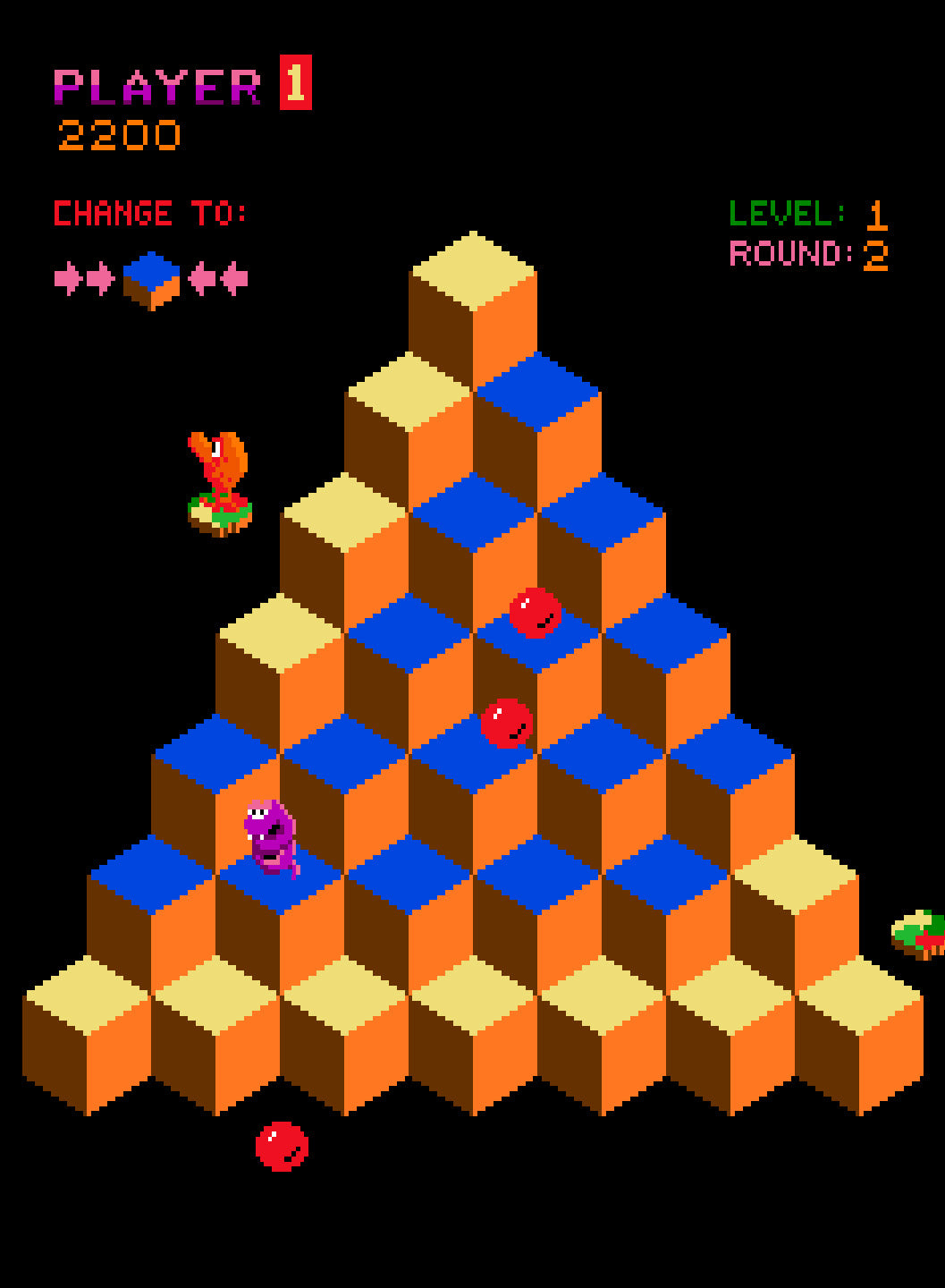
Unique Features and Gameplay Mechanics
Q*bert introduced several innovative mechanics that made it stand out from other arcade games of its time.
Key Innovations:
- Isometric View: The game’s isometric graphics were cutting-edge for its time. The 3D-like perspective gave players a fresh, engaging view of the pyramid and added depth to the gameplay, which was a novelty for many arcade games in the early 1980s.
- Character Animations: Q*Bert’s charming animations, including his signature "hop" and vocalizations, became one of the game’s most recognizable features. His unique design and quirky personality helped make him a standout character.
- Dynamic Enemies: The game’s enemies each had their own movement patterns, which required players to adapt quickly and avoid getting cornered. This added a level of strategy to the gameplay, as players had to think ahead to outmaneuver the enemies.

Q*bert Gameplay Video
Strategies for High Scores
- Plan Your Jumps: The key to success in Q*bert is timing and planning. Because you can only jump diagonally, think ahead about the best path to change the tiles while avoiding enemies.
- Use the Obstacles: Special items like the floating platforms can be used strategically to avoid enemies or make completing levels easier. Utilize these items to your advantage.
- Master Enemy Patterns: Each enemy has a specific movement pattern. Learning these patterns can help you avoid them and make more efficient moves.
Legacy and Player Reception
Q*bert is widely regarded as one of the most innovative and influential arcade games from the early 1980s. Its success in arcades led to numerous home ports and inspired other puzzle-based arcade games. The game’s distinctive design, memorable characters, and innovative gameplay mechanics have earned it a spot in the pantheon of classic arcade games.
Community Feedback:
- Players Appreciate: The unique gameplay, challenging mechanics, and vibrant graphics that make Q*bert an engaging experience. The game’s learning curve and increasing difficulty make it addicting for players.
- Critics Note: Some players find the movement mechanic difficult to master at first, but once they get the hang of it, the game becomes a rewarding challenge.
Awards and Recognition: Q*bert has been recognized as one of the top arcade games of its time and has been included in numerous “best of” arcade game lists. It has also remained a fan-favorite in retro gaming communities.
Fun Facts
- Iconic Sound Effects: The game's sound effects, including Q*bert's signature "Q*bert-yell," have become iconic and are instantly recognizable to fans of the game.
- Home Versions: Q*bert was successfully ported to several home consoles, including the Atari 2600 and the Nintendo Entertainment System (NES), further cementing its place in gaming history.
- Merchandise and TV Show: The game’s popularity led to Q*bert appearing on a cartoon show in the 1980s, as well as a wide range of Q*bert merchandise.
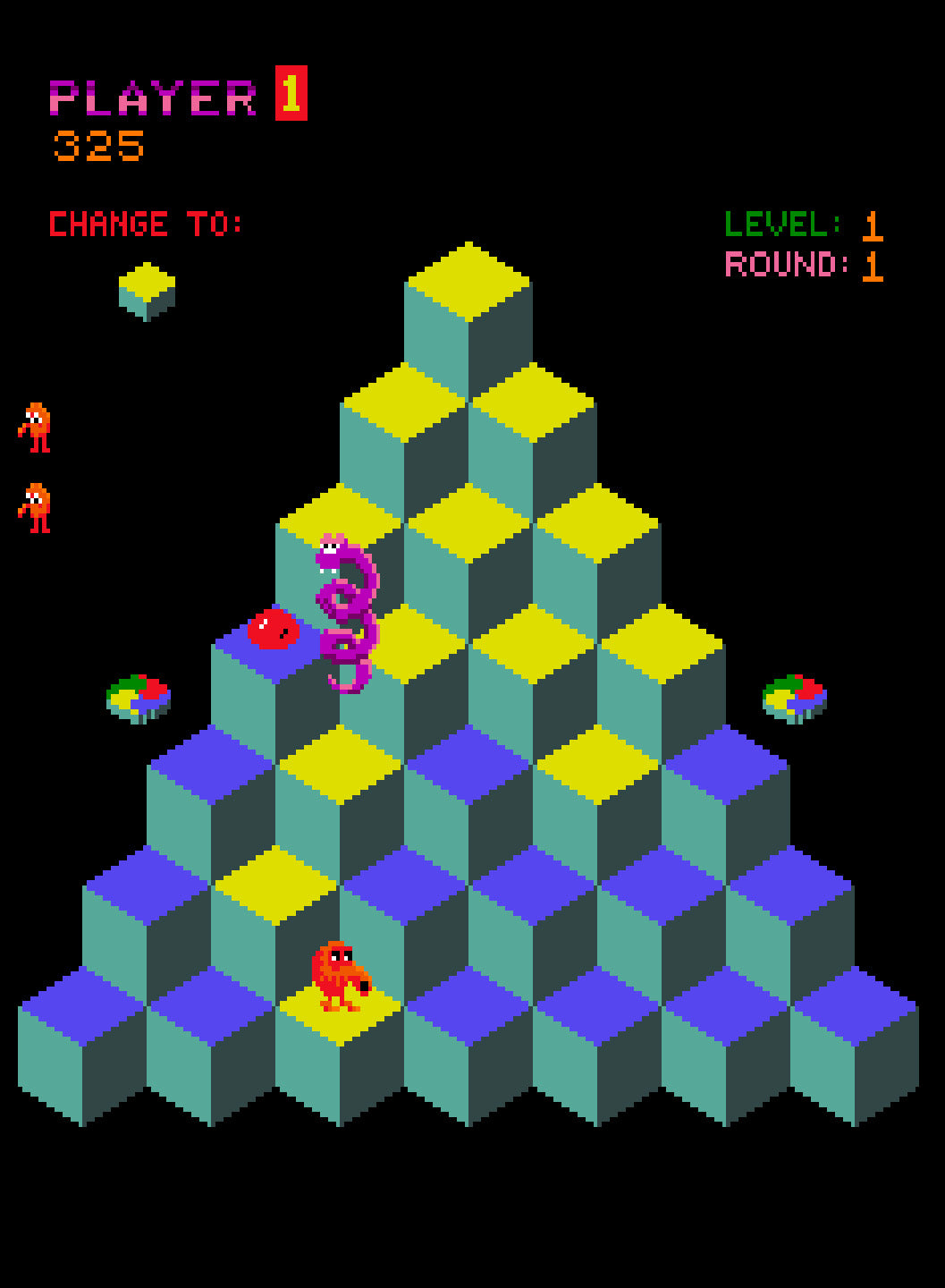
Conclusion
Q*bert remains one of the most enduring classics of the arcade era. Its innovative gameplay, charming character, and strategic depth have kept it relevant for decades. Whether you're revisiting this nostalgic gem or discovering it for the first time, Q*bert offers a fun, challenging, and rewarding arcade experience that stands the test of time.
Explore More: Love retro arcade classics? Check out our guides on Pac-Man, Galaga, and Miss Pac-Man to learn more about the legendary games that helped shape the gaming world!
Questions you might have:
What is Q*bert arcade?
Qbert arcade is a classic arcade video game released in 1982 by Gottlieb. It features unique isometric gameplay where players control the character Qbert, hopping on cubes to change their colors while avoiding adversaries.
Who created Q*bert?
Q*bert was created by Warren Davis and Jeff Lee, and it was published by Gottlieb.
What is the objective of Q*bert?
The main objective in Q*bert is to change the color of all the cubes in a pyramid-shaped playfield by hopping on them while avoiding enemy characters.
Who are the enemy characters in Q*bert?
The primary enemy in Q*bert is Coily, a snake-like character. Other adversaries include Ugg, Wrongway, Slick, and Sam, each with its unique behavior and challenges.
What are the different types of cubes in Q*bert?
Q*bert's playfield includes various cube types, including cubes that change color when hopped on and cubes that remain one color throughout the level.
How does Q*bert's level progression work?
Q*bert features multiple levels, each with a distinct pyramid layout and increasing complexity. As you progress, the game introduces new challenges and enemy patterns.
Is Q*bert still playable today?
Yes, Qbert is available for play on various gaming platforms, including emulators, classic arcade collections, and as part of retro gaming events. Some arcades may also have original Qbert cabinets for enthusiasts to enjoy.

